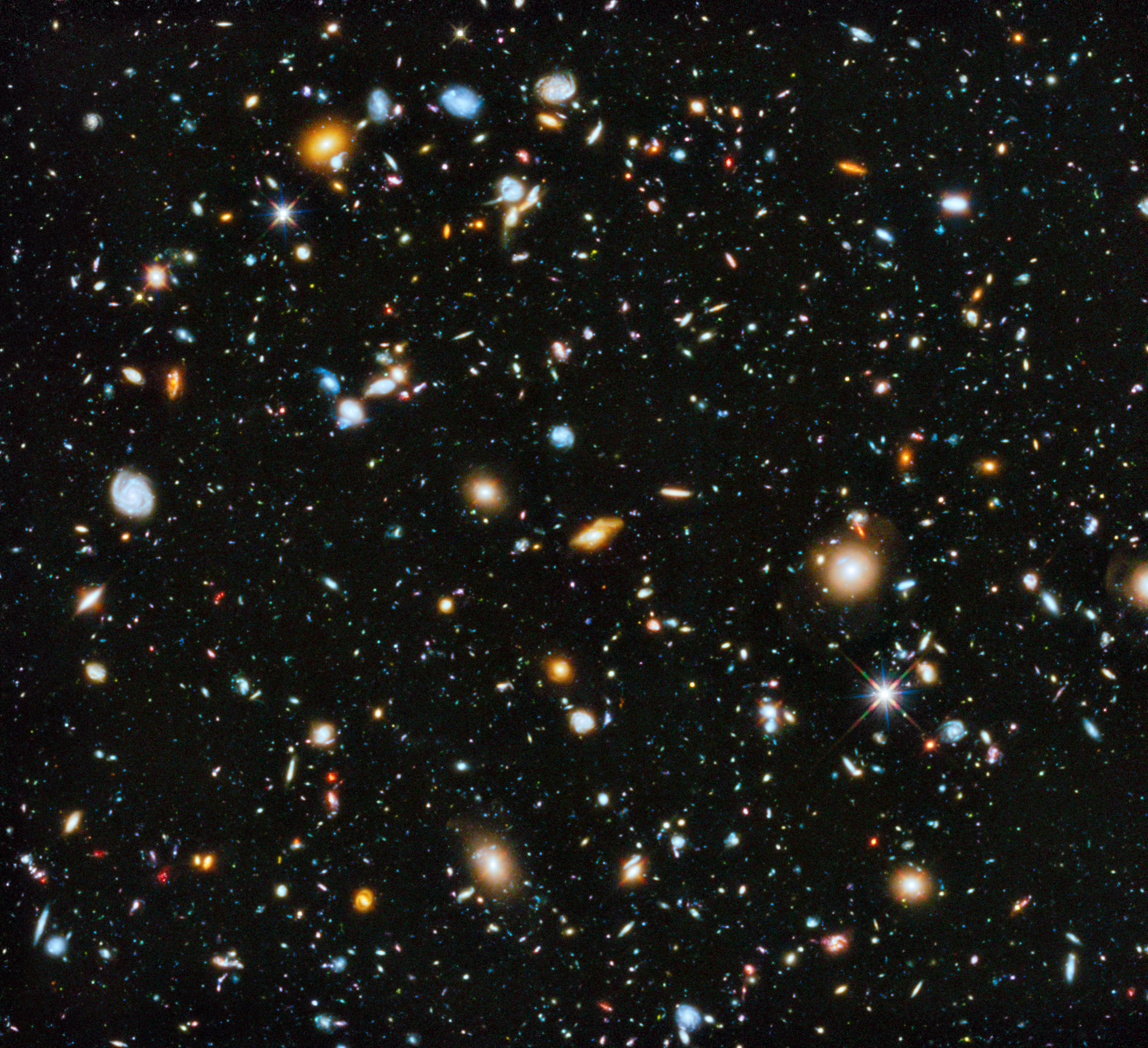Mission Overview
Hubble Ultraviolet Ultra Deep Field (UVUDF)
Citations: See ADS Statistics
Overview
The following proposals are relevant to this HSLP: HST Program 12534
The Hubble UltraDeep Field (UDF) previously had deep observations at Far-UV, optical (B-z), and NIR wavelengths (Beckwith et al. 2006; Siana et al. 2007, Bouwens et al. 2011; Ellis et al. 2013; Koekemoer et al. 2013; Illingworth et al. 2013), but only comparatively shallow near-UV (u-band) imaging from WFPC2. With this new UVUDF project (Teplitz et al. 2013), we fill this gap in UDF coverage with deep near-ultraviolet imaging with WFC3-UVIS in F225W, F275W, and F336W. In the spirit of the UDF, we increase the legacy value of the UDF by providing science quality mosaics, photometric catalogs, and improved photometric redshifts to enable a wide range of research by the community. The scientific emphasis of this project is to investigate the episode of peak star formation activity in galaxies at 1 < z < 2.5. The UV data are intended to enable identification of galaxies in this epoch via the Lyman break and can allow us to trace the rest-frame FUV luminosity function and the internal color structure of galaxies, as well as measuring the star formation properties of moderate redshift starburst galaxies including the UV slope. The high spatial resolution of UVIS (a physical scale of about 700 pc at 0.5 < z < 1.5) enable the investigation of the evolution of massive galaxies by resolving sub-galactic units (clumps). We will measure (or set strict limits on) the escape fraction of ionizing radiation from galaxies at z~2-3 to better understand how star-forming galaxies reionized the Universe.
Data were obtained in three observing Epochs, each using one of two observing modes (as described in Teplitz et al. 2013). Epochs 1 and 2 together obtained about 15 orbits of data per filter, and Epoch 3 obtained another 15 orbits per filter. In the second release, we include Epoch 3, which includes all the data that were obtained using post-flash (the UVIS capability to add internal background light), to mitigate the effects of degradation of the charge transfer efficiency of the detectors (Mackenty & Smith 2012). The data were reduced using a combination of standard and custom calibration scripts (see Rafelski et al. 2015), including the use of software to correct for charge transfer inefficiency and custom super dark files. The individual reduced exposures were then registered and combined using a modified version of the MosaicDrizzle pipeline (see Koekemoer et al. 2011 and Rafelski et al. 2015 for further details) and are all made available here. In addition to the image mosaics, an aperture matched PSF corrected photometric catalog is made available, including photometric and spectroscopic redshifts in the UDF. The details of the catalog and redshifts are described in Rafelski et al. (2015). If you use these mosaics or the catalog, please cite Teplitz et al. (2013) and Rafelski et al. (2015).
Description Of Data Products
Each file name begins with the same prefix: "hlsp_uvudf_hst_wfc3-uvis-". For image mosaics, the next part describes the pixel scale, either 30mas or 60mas. All the images released via the HLSP are from epoch 3 (see the readme), which is included in the target part of the filename ("udf-epoch3"). The next part of the filename includes the HST filter for that mosaic or preview image, followed by the version number and the file extension.
The extensions are:
- _readme.txt = README file
- _cat.fits = catalog file
- _drz.fits = drizzled image mosaic
- _rms.fits = root mean square map
- _wht.fits = weight map
An example of a drizzled mosaic image file name is:
hlsp_uvudf_hst_wfc3-uvis-30mas_udf-epoch3_f225w_v2.0_drz.fits
Data Access

